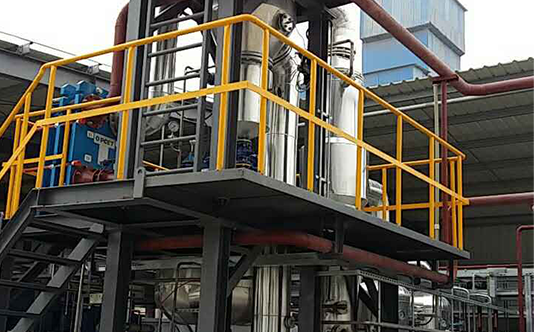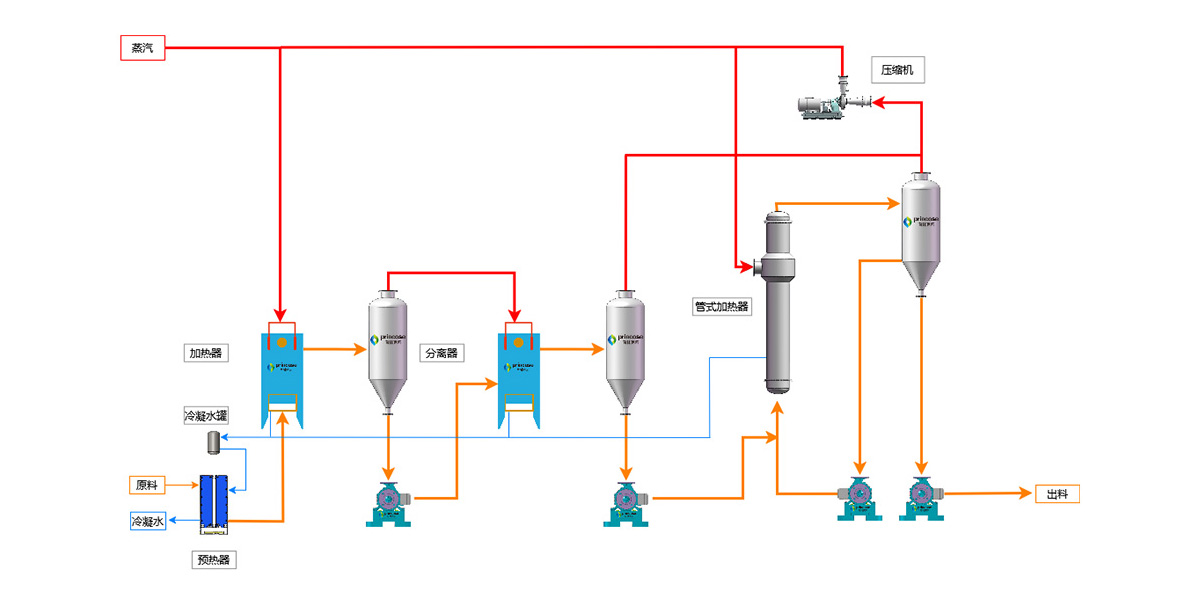The Multiple Effect Evaporation (MEE) system, abbreviated as MEE, consists of two or more evaporator units (combined plate and tube types) linked together to form a complete energy-saving evaporation system. In this system, the secondary steam generated during evaporation in the preceding effect is used as the heating steam for the subsequent effect, enabling repeated utilization of thermal energy and conserving heating steam.



The most notable feature of the MEE system is its high efficiency and energy saving. By fully utilizing the energy of secondary steam, the MEE system consumes more than 30% less energy than single-effect evaporators.

The structure of the MEE system is relatively compact and occupies a small footprint. Due to its use of multiple evaporators connected in series, the equipment is smaller in size, enabling better integration with other equipment during production and improving production efficiency.

The plate-tube combined MEE system adopts an automated control system, making operation simple and convenient.
Rich experience in process planning and equipment manufacturing
Customized Process Solutions
The project scope ranges from experimental testing of material parameters, to determination of process plans, to drawing, procurement, manufacturing, installation, debugging, training, and ultimately equipment delivery

Career
Professional
build Brilliant
Future
Proficient in industry/Achieving the future
